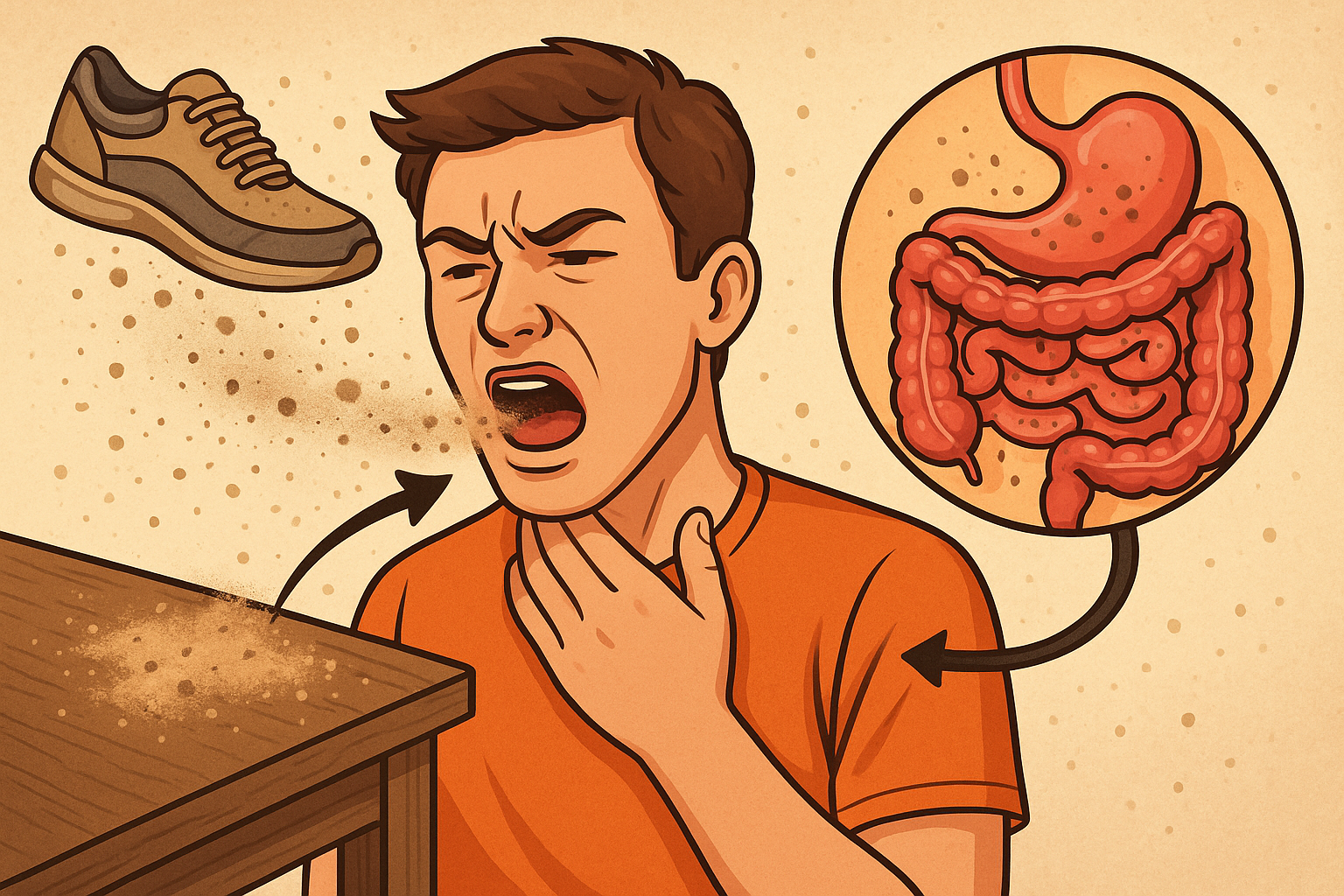You’ve probably never thought twice about it. A quick sneeze, a sip of water, and that tiny bit of dust in your mouth is gone.
But here’s the wild part—on average, we swallow small amounts of dust every day. It floats off furniture, shoes, or pet dander… and yes, it ends up in your food, on your hands, and eventually in your mouth.
So naturally, the big question is: what actually happens when dust gets into your body? Is it just a gross mental image—or could it actually hurt you?
Dust ingestion: The silent daily occurrence
Here’s the good news first: most of the dust you swallow doesn’t stick around for long. Your gastrointestinal (GI) tract sees it as a foreign guest—one it wants out.
According to research from environmental health studies, the vast majority of ingested dust simply passes through, untouched and unbothered, and gets excreted in your feces. That’s right—your body doesn’t even absorb most of it. In healthy environments with average dust exposure, this process happens so smoothly, you wouldn’t even notice.
But wait—There’s a twist
While most dust leaves your body without making a fuss, not all dust is made equal.
In a 2023 lab study published on MDPI, researchers exposed human colonic cells (the kind that line your large intestine) to concentrated indoor dust samples. They found that high doses of this dust reduced cell viability and even increased apoptosis, cell death.
Granted, those were lab conditions—far more concentrated than everyday exposure—but it made scientists ask: could long-term, low-grade dust ingestion cause problems over time?
Know the real danger: What’s inside the dust matters
The real kicker is that it’s not just about how much dust you ingest—it’s about what’s in it.
“Clean-looking” homes can still have dust laced with toxic ingredients like:
- Lead particles from old paint or contaminated soil
- Pesticide residues brought in from your shoes or drifted through windows
- Heavy metals from electronics, batteries, or industrial dust
These toxins can be absorbed in your gut when swallowed, especially in children whose bodies are still developing. Lead poisoning, for example, can occur in small cumulative doses and lead to developmental delays, learning difficulties, or behavioral issues.
That’s why agencies like the CDC and WHO pay close attention not just to airborne dust but to household dust that ends up on kids’ fingers, toys… and eventually, in their mouths.
We focus on the air, but should consider the gut too
Most of us think of dust as a threat to our lungs, which makes sense. Inhalation has clear links to asthma, allergies, and even cardiovascular risk.
But we’re just beginning to understand how slow-burning ingestion—over months or years—could impact other organs. And research is still catching up. Scientists admit that the long-term effects of ingesting environmental dust at low concentrations remain largely unstudied.
So, should you panic about every speck of dust?
Not at all. Your digestive system is actually an incredible first line of defense. For most people living in clean, modern environments, ingestion of everyday household dust contributes little or no threat to your health.
But here are a few smart moves to make now:
- Keep floors and surfaces dust-free, especially if you have crawling babies or toddlers.
- Remove your shoes indoors to reduce the spread of outdoor contaminants.
- Check your home for old, cracking lead-based paints if you live in a building built before 1978.
- Wash hands often, particularly before meals and after coming inside.
The bottom line
Your body is pretty efficient at dealing with dust it doesn’t want. It pushes most of it right out the back door—literally.
But under the surface, we’re only starting to understand how specific components in dust might affect the gut and the body if they make their way inside day after day. For now, the best approach is this: stay curious, keep your space clean, and don’t underestimate what rides in on the soles of your shoes.



Leave a Comment